I will be using one of the above for my next active system and I was just wondering which one I should chose?
I like the Audax's for there higher efficiencies and lower prices but i like the PHL for its higher Xmax. But will the xmax really come into play when crossed over (4th order) at ~350hz? I also hear that the Audax 170M0 has foam that could rot over time. Is this true?
(it would also be alot easier to flush mount the Audax's round frame then the PHLs frame)
Also, when looking at the audax SPL/freq graphs, I don't understand how they rate the driver at 100dB. From the graphs, the average SPL seems to be in the 95dB range.
I like the Audax's for there higher efficiencies and lower prices but i like the PHL for its higher Xmax. But will the xmax really come into play when crossed over (4th order) at ~350hz? I also hear that the Audax 170M0 has foam that could rot over time. Is this true?
(it would also be alot easier to flush mount the Audax's round frame then the PHLs frame)
Also, when looking at the audax SPL/freq graphs, I don't understand how they rate the driver at 100dB. From the graphs, the average SPL seems to be in the 95dB range.
For an active system the sensitivity issue is minor.
Sound quality - it's hard to tell the 1120 and PR170M0 apart.
I haven't tried the 'Z' PR.
The PR17 is cheaper than 1120.
The 1120 has more xmax that you don't need if you cross it
over high and it has more power handling {rating}.
If you want to double your power handling you can try the
1160 but I think the sound quality is just a hair lower than 1120,
but you can abuse this one more.
Sound quality - it's hard to tell the 1120 and PR170M0 apart.
I haven't tried the 'Z' PR.
The PR17 is cheaper than 1120.
The 1120 has more xmax that you don't need if you cross it
over high and it has more power handling {rating}.
If you want to double your power handling you can try the
1160 but I think the sound quality is just a hair lower than 1120,
but you can abuse this one more.
between the 2 audax's the MO is easier to work with. In particular the ZO can be considerably better than the MO -IF- it is being driven by an amplifier with a high output impeadance, otherwise it sounds a little "constricted" (sometimes a LOT more constricted). (btw, it also takes a LOT longer to break-in.)
IF you are worried about foam rot from the MO then consider a damping compound (to apply to the surround) that has UV protection. I think Lambda Acoustics used this stuff on their surrounds - so you might try contacting Nick to find out what the product is. (and I have NO idea what his website is now..)
IF you are worried about foam rot from the MO then consider a damping compound (to apply to the surround) that has UV protection. I think Lambda Acoustics used this stuff on their surrounds - so you might try contacting Nick to find out what the product is. (and I have NO idea what his website is now..)
ScottG said:IF you are worried about foam rot from the MO then consider a damping compound (to apply to the surround) that has UV protection. I think Lambda Acoustics used this stuff on their surrounds - so you might try contacting Nick to find out what the product is. (and I have NO idea what his website is now..)
http://www.stryke.com/ John J. bought Nick's remaining inventory so he might know.
thylantyr, still have a bunch of Apollo's? I'm looking for T/S specs.
sheldon
I´ll dig this one out, since here are some people who know the old AUDAX 170... We have some old ZECK Speakers which incoorporate the olde version of the AUDAX PR170. The foam surrounds are broken and I am looking for replacements. So far I only found replacement Surrounds which are noch flat like the original. Does anybody have a source?
Thanx
Thanx
Hi Sabbelbacke
Here you are :
Atelier de réparation et vente de haut-parleurs AUDAX
I've got one pair for sale too
Regards
Phil
Here you are :
Atelier de réparation et vente de haut-parleurs AUDAX
I've got one pair for sale too
Regards
Phil
Audax PR170MO
I'm gonna vote for the PR170MO (it's letter 'O' and not zero at the end) not because of some 'ultimate' sound quality this or that. Rather, I have 4 of them (and 4 slightly damaged ones) and I don't have time or skills to make a properly implemented system with them. So I'll just ride on your coat tails!
I take it this is a 3-way?
Key question: Is this for home or pro use? If it's a living room speaker then the PR170 can be used much lower with less steep filters.
Here are two thread with some great info:
http://www.diyaudio.com/forums/multi-way/77784-audax-pr170m0-100-db-just-94-db.html
http://www.diyaudio.com/forums/multi-way/232794-pa-midrange-hifi-3way.html
They are only a few pages long so it's easy to browse them.
Here are some quotes from the first thread:
"The PR170M0 is meant to be operated significantly above it's fundamental resonance. There the SPL is determined by many factors other than T/S Parameters. That said, I make it 97db/2.83V/1m and not 100db. Still much depends upon use as well."
"I've worked extensively with PR170M0s and variants (PR17HR70, PR17HR100).
I too, would limit low end extension to no lower than 400 Hz, 18 dB/oct, or 500 Hz, 12 dB/oct. IME, for a more "public address" application (which is where these drivers see their most usage, ie, in several EAW and Peavey high-end cabinets... Audax OEM supplied the PR17 to these manufacturers, among others), a range of 500-5000 Hz is QUITE usable... I tend to use these drivers in a small enclosure (Qtc of about .8 to 1.0), with a silght overlap between the woofer and midrange, and a slight "underlap" (gap) between the midrange and tweeter. Also, using a slightly lower-Q low-pass (ie, larger inductor and smaller cap) on the top end of the PR170, will also benefit the response greatly. For the most part, if you use the tricks specified, the response will wind up pretty much ruler-flat. .. the "rising response" will be very well compensated for. Exemplary dynamic range and control...
For a "hi-fi" application, using them in the range of about 400-3200 Hz (three octave spread) would be quite nice. Avoids most of the breakup, and what you do get, does not color the sound to any detectable amount. GREAT driver. My first choice for high-efficiency 3-way systems, even to this day..."
"Yep, first breakup on a 6" driver is usually around 1600 Hz or so. But, from the data I've collected using this driver, the breakup is very benign... and doesn't really begin to color the sound, until well above 3KHz. In fact, even using it up to 5KHz... the dispersion is more of a sonic factor (ie beaming) than breakup... to a LARGE margin..."
Here are some quotes from the second thread:
"I use the audax pr170 crossed around 350hz and 5khz. The sound is sublime. efficiency is 100db. its a incredible driver. It is the best mid I have ever heard.
I use the beyma 12br70 for my bass need, and the two blend seemlessly.
look around for what people think of the audax, thorsten loesch for example, which is a reference in audio thinks highly of this driver..."
Here's a ton of info on the PR170MO
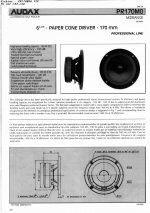
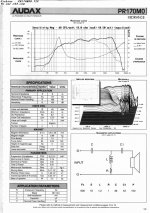
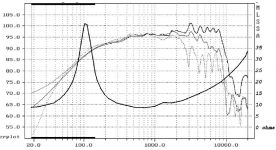
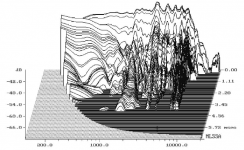
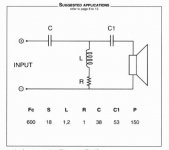
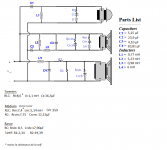
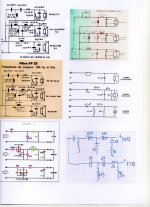
View attachment AUDAX-Vergleichsliste-2009-09.pdf
I warned you it was a ton!
Oh and if you don't have a DSP crossover you simply must get one! I have a miniDSP 2x4.
Here's my thread on these incredible speaker designing tools!
http://www.diyaudio.com/forums/mult...-tool-real-time-dsp-crossover-adjustment.html
"High level of flexibility: correct open baffle, notch resonances, correct driver response, xover point, slopes (BW6-24, LR12-48, Bessel ..), delay, attenuation ...
The 2 way plugin interface starts with digital atten, then 6 filters of pre eq, then crossovers, then 6 more filters of eq, then atten and delay. Whew!!!
Awesome! Doing this analog would take forever (passive), awhile (active), or a bit (Pass/Marchant variable xover) but with DSP it's click click click ... go!"
...
"Oh yeah, it also has a digital (24bit) vol control ($5 pot) so you can use the top part of volume knob without touching the actual 16bit CD resolution! !! !
Next I'm going to try 3 and 4 way by getting the 4-way plugin for an extra $10. With it the 2x4 can be easily reprogrammed to become a 1x4 (1 in and 4 out). !!! !!!! !! This of course means it's not stereo anymore but that's ok for testing for now.
Then I'll get another 2x4 so I'll have a stereo 3/4 way and then go full digital with the $70 miniDigi (2 coax and 2 optical SPDIF ins that connect directly to one or two 2x4s)!!! !! "
Good luck and I hope you choose the PR1790MO. Keep us posted (so I can copy your design )
) 
Cheers,
Jeff
I'm gonna vote for the PR170MO (it's letter 'O' and not zero at the end) not because of some 'ultimate' sound quality this or that. Rather, I have 4 of them (and 4 slightly damaged ones) and I don't have time or skills to make a properly implemented system with them. So I'll just ride on your coat tails!
I take it this is a 3-way?
Key question: Is this for home or pro use? If it's a living room speaker then the PR170 can be used much lower with less steep filters.
Here are two thread with some great info:
http://www.diyaudio.com/forums/multi-way/77784-audax-pr170m0-100-db-just-94-db.html
http://www.diyaudio.com/forums/multi-way/232794-pa-midrange-hifi-3way.html
They are only a few pages long so it's easy to browse them.
Here are some quotes from the first thread:
"The PR170M0 is meant to be operated significantly above it's fundamental resonance. There the SPL is determined by many factors other than T/S Parameters. That said, I make it 97db/2.83V/1m and not 100db. Still much depends upon use as well."
"I've worked extensively with PR170M0s and variants (PR17HR70, PR17HR100).
I too, would limit low end extension to no lower than 400 Hz, 18 dB/oct, or 500 Hz, 12 dB/oct. IME, for a more "public address" application (which is where these drivers see their most usage, ie, in several EAW and Peavey high-end cabinets... Audax OEM supplied the PR17 to these manufacturers, among others), a range of 500-5000 Hz is QUITE usable... I tend to use these drivers in a small enclosure (Qtc of about .8 to 1.0), with a silght overlap between the woofer and midrange, and a slight "underlap" (gap) between the midrange and tweeter. Also, using a slightly lower-Q low-pass (ie, larger inductor and smaller cap) on the top end of the PR170, will also benefit the response greatly. For the most part, if you use the tricks specified, the response will wind up pretty much ruler-flat. .. the "rising response" will be very well compensated for. Exemplary dynamic range and control...
For a "hi-fi" application, using them in the range of about 400-3200 Hz (three octave spread) would be quite nice. Avoids most of the breakup, and what you do get, does not color the sound to any detectable amount. GREAT driver. My first choice for high-efficiency 3-way systems, even to this day..."
"Yep, first breakup on a 6" driver is usually around 1600 Hz or so. But, from the data I've collected using this driver, the breakup is very benign... and doesn't really begin to color the sound, until well above 3KHz. In fact, even using it up to 5KHz... the dispersion is more of a sonic factor (ie beaming) than breakup... to a LARGE margin..."
Here are some quotes from the second thread:
"I use the audax pr170 crossed around 350hz and 5khz. The sound is sublime. efficiency is 100db. its a incredible driver. It is the best mid I have ever heard.
I use the beyma 12br70 for my bass need, and the two blend seemlessly.
look around for what people think of the audax, thorsten loesch for example, which is a reference in audio thinks highly of this driver..."
Here's a ton of info on the PR170MO







View attachment AUDAX-Vergleichsliste-2009-09.pdf
I warned you it was a ton!
Oh and if you don't have a DSP crossover you simply must get one! I have a miniDSP 2x4.
Here's my thread on these incredible speaker designing tools!
http://www.diyaudio.com/forums/mult...-tool-real-time-dsp-crossover-adjustment.html
"High level of flexibility: correct open baffle, notch resonances, correct driver response, xover point, slopes (BW6-24, LR12-48, Bessel ..), delay, attenuation ...
The 2 way plugin interface starts with digital atten, then 6 filters of pre eq, then crossovers, then 6 more filters of eq, then atten and delay. Whew!!!
Awesome! Doing this analog would take forever (passive), awhile (active), or a bit (Pass/Marchant variable xover) but with DSP it's click click click ... go!"
...
"Oh yeah, it also has a digital (24bit) vol control ($5 pot) so you can use the top part of volume knob without touching the actual 16bit CD resolution! !! !
Next I'm going to try 3 and 4 way by getting the 4-way plugin for an extra $10. With it the 2x4 can be easily reprogrammed to become a 1x4 (1 in and 4 out). !!! !!!! !! This of course means it's not stereo anymore but that's ok for testing for now.
Then I'll get another 2x4 so I'll have a stereo 3/4 way and then go full digital with the $70 miniDigi (2 coax and 2 optical SPDIF ins that connect directly to one or two 2x4s)!!! !! "
Good luck and I hope you choose the PR1790MO. Keep us posted (so I can copy your design
 )
) Cheers,
Jeff
I've used the PR170MO too and it's little brother MDH303 (if i remember correct) - same driver just with a 93mm magnet and lower sensitivity.
I have not tried but talked to many regarding PHL's driver. They are infact a "mk2" of the audax. Philippe worked before at Audax and he designed the famous PR17 and other pro drivers for Audax.
PHL 1120 is a refined PR17 and so is sq too.
I have not tried but talked to many regarding PHL's driver. They are infact a "mk2" of the audax. Philippe worked before at Audax and he designed the famous PR17 and other pro drivers for Audax.
PHL 1120 is a refined PR17 and so is sq too.
- Status
- This old topic is closed. If you want to reopen this topic, contact a moderator using the "Report Post" button.
- Home
- Loudspeakers
- Multi-Way
- Audax PR170M0 vs PR170Z0 vs PHL1120